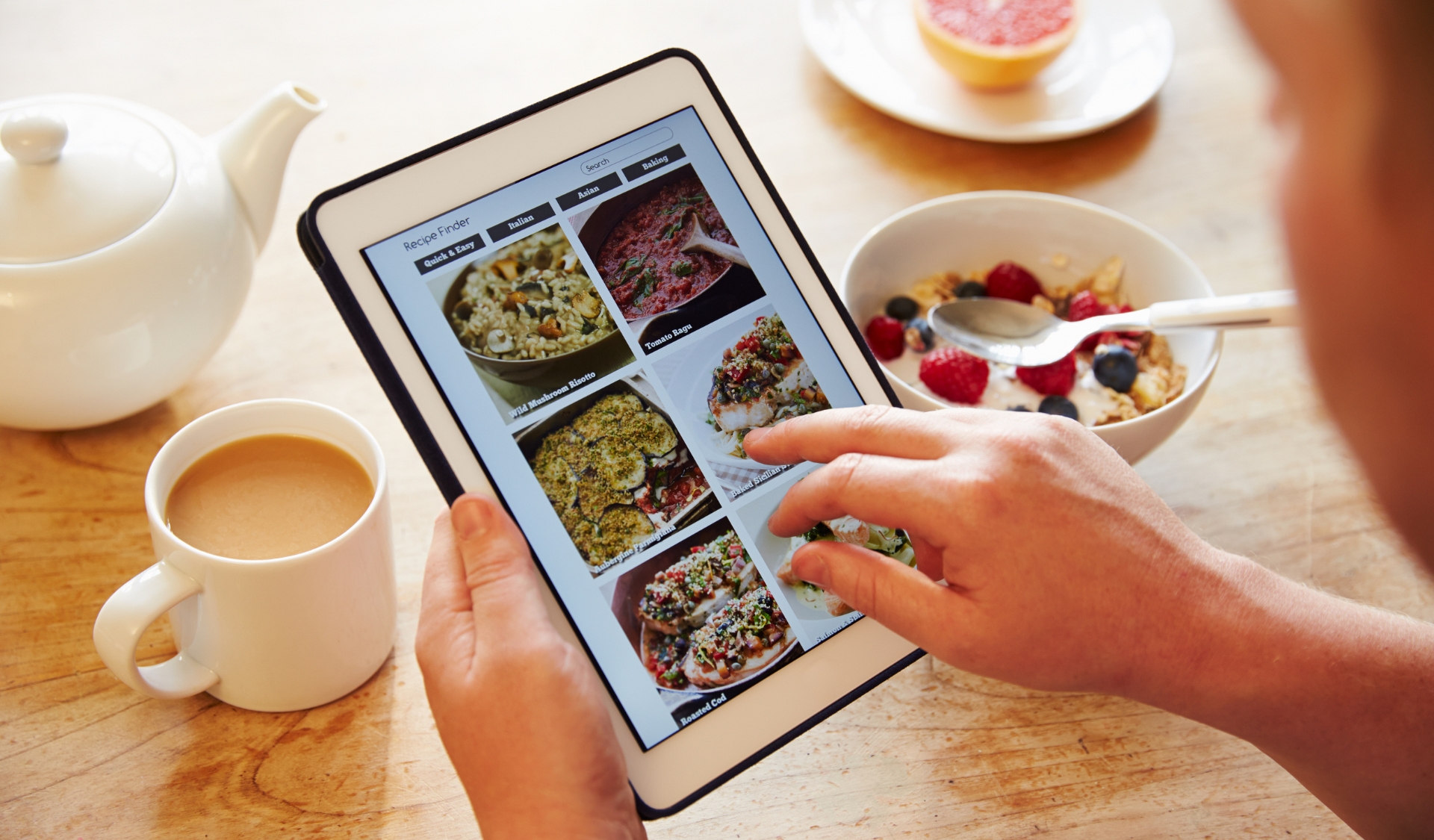Key Takeaways
- Finding gluten-free recipes that are healthful and tasty is possible.
- Being mindful of hidden sources of gluten can help to identify which recipes are safe for celiac and a gluten intolerance.
- Looking for recipes with naturally gluten-free ingredients that include fiber and a variety of food groups is your best option.
Navigating celiac disease or a gluten intolerance involves more than just eliminating wheat- with careful consideration of ingredients, finding the right gluten-free recipe can be satisfying, delicious, healthy, and safe.
Being diagnosed with celiac disease or learning that you have a gluten-intolerance is life-changing. And while there are so many gluten-free options to choose from today, changing the foods that you know and love, and learning to cook gluten-free can take time for you to get used to. This is especially true if you don’t want to always rely on packaged gluten-free foods, which are known to have more fat, sodium, and sugar compared to their gluten-containing counterparts.
While it may seem difficult at first, cooking gluten-free doesn’t mean you have to sacrifice variety, nutrition, or flavor in your meals. In fact, with a little attention to ingredients and balance, your plate can be both satisfying and safe for celiac and gluten intolerance (pro tip: homemade food is usually more nutrient dense, too!). Whether you're newly diagnosed or just looking to refine your meal planning, here's what to look for in recipes to maintain a nutritious, gluten-free lifestyle.
Start with Naturally Gluten-Free Ingredients
The safest and most nutritious gluten-free recipes begin with ingredients that don’t require substitution. These are your dietary cornerstones and are very similar to the food groups that you probably learned about in elementary school! Included are:
- Fruits & Vegetables: Fresh, frozen, or even canned (with no added sauces or flavorings) are all naturally gluten-free. Rich in fiber, vitamins, minerals, and antioxidants, they help support immune function and digestive health.
- Unprocessed Proteins: Plain beef, chicken, turkey, pork, fish, seafood, and eggs contain no gluten. Be cautious with deli meats, marinated meats, and breaded items, as these may contain gluten.
- Legumes, Nuts, & Seeds: Beans, lentils, chickpeas, almonds, walnuts, and seeds provide protein, fiber, and healthy fats. Avoid flavored or roasted varieties unless labeled gluten-free.
- Dairy: Milk, cheese, and yogurt are good sources of protein, calcium, and other vitamins and minerals. Dairy foods are naturally gluten-free, but always double-check for additives or thickeners in flavored versions.
- Gluten-Free Grains: Grains are a great source of fiber, protein, B vitamins, and minerals. You’ll want to limit recipes that rely heavily on wheat replacements like white rice flour or corn starch, which may be low in nutrients. Stick to naturally gluten-free grains like:
- Quinoa
- Brown or wild rice
- Millet
- Buckwheat (despite the name, it's gluten-free)
- Sorghum
- Amarant
Check for Hidden Sources of Gluten
Even the most seemingly straightforward recipes can include ingredients that hide gluten in plain sight. Look for recipes that explicitly list certified gluten-free ingredients or are written with food sensitivities in mind. Become a recipe reading detective and be aware of sneaky ingredients like:
- Soy sauce: Standard soy sauce contains wheat. Use tamari or certified gluten-free versions.
- Bouillons and Stocks: Many contain wheat-based flavor enhancers or thickeners.
- Condiments and Sauces: Ketchup, mustard, mayonnaise, and salad dressings often contain gluten as a thickener or stabilizer.
- Processed Cheese and Seasoned Snacks: These might contain anti-caking agents or flavor enhancers derived from gluten.
Include All Food Groups for a Balanced Plate
When planning meals, aim for recipes that offer a variety of food groups, which are similar to the naturally gluten-free ingredients listed above. When you include multiple food groups, you're ensuring that you’re getting a full spectrum of macronutrients (protein, carbohydrates, and fat) and micronutrients (vitamins and minerals), which are needed if you’re recovering from intestinal damage caused by celiac disease. Here’s what to look for in a balanced recipe:
- Lean Proteins: Skinless poultry, fish, eggs, lean beef, tofu, or legumes should make up a solid part of each meal to aid in muscle repair and immune support.
- Healthy Fats: Recipes should include sources of unsaturated fats like olive oil, avocado, nuts, seeds, and fatty fish. These promote heart and brain health and improve vitamin absorption.
- Complex Carbohydrates & Whole Grains: Instead of simple starches, go for recipes that feature fiber-rich gluten-free carbs like sweet potatoes, quinoa, brown rice, and beans to keep blood sugar levels stable and support digestion and your gut microbiome.
- Fruits and Vegetables: These should cover at least half your plate. Variety is key—eat the rainbow! Choose recipes that feature multiple colors, which will ensure that you’re getting a mix of vitamins, minerals, and antioxidants.
- Dairy or Fortified Alternatives: Calcium and vitamin D are needed for a variety of reasons, but especially bone health and to prevent osteoporosis/osteopenia, which those with celiac are at risk for developing. Look for recipes using milk, cheese, or fortified dairy alternatives like almond or soy milk.
Don’t forget the Fiber!
Fiber, the indigestible carbohydrate part of plant foods helps to keep you regular, can aid in keeping you feeling full and satiated, and helps to regulate blood sugar. Fiber may also reduce your risk for heart disease and it’s been shown that it may provide protection against some cancers, including colon cancer. Unfortunately, many gluten-free products lack it because they’re using starches and other refined parts of gluten-free grains in their ingredients. So to be sure that you’re meeting your fiber needs, you’ll want to look for gluten-free recipes that incorporate:
- Gluten-Free Whole Grains like brown rice, teff, amaranth, quinoa, or sorghum
- Legumes and Lentils
- Vegetables and Fruits with Skin (e.g., apples, carrots, berries, sweet potatoes, kiwi, broccoli, etc.)
- Flaxseed, Chia Seeds, and Psyllium Husk (can be added to smoothies, baking, or yogurt)
It's Time to Start Your Gluten-Free Recipe Search
Navigating celiac disease or a gluten-intolerance is more than just eliminating wheat and gluten - it's about finding the right recipe, cooking, and creating a nourishing, balanced plate every day - or most of the time! The best gluten-free recipes aren’t just safe; they’re balanced, colorful, diverse, rich in whole foods, and full of flavor.
Are you wanting to learn more about celiac, eating gluten-free, and have access to over 35 delicious gluten-free recipes? Join Amenta's on-demand, self-paced Celiac Disease Program so that you’ll have the tools you need to live your best gluten-free life!
Your one-stop hub for celiac education and gluten-free living
- Make confident food choices and understand how to read labels through bite-sized video modules
- Follow expert GI-dietitians who've transformed the lives of 350+ clients
- Stop guessing and start healing with science -based tips and support

















